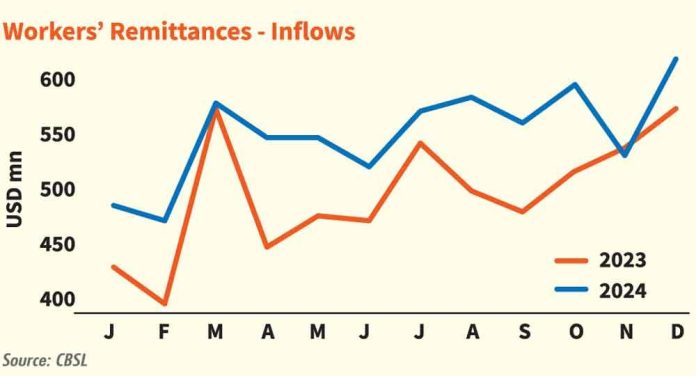Remittances rose to US$614 million in December, a seasonal increase
In 2024, remittances sent home by Sri Lankan workers abroad recorded the highest level since 2020, enabling the country’s foreign sector to return to crisis-era flows from its largest source of foreign income.
Sri Lankans working abroad sent home remittances of a substantial US$613.8 million in December 2024, compared to US$569.7 million in the same month last year and US$530.1 million in November.
Typically, December remittances spike due to year-end festivities and the holiday season, which also precedes the new school back-to-school season.
On average, after March, Sri Lanka receives the next highest inflow of remittances, usually in December. But this time the remittance income in December exceeded the US$ 572.4 million received in March.
Strong remittance flows in December led to full-year remittance inflows of US$6,575.4 million, up 10.1 percent from what Sri Lanka received in 2023 and the highest since 2020, when remittances exceeded US$7.1 billion.
Since then, the inflow of remittances to Sri Lanka decreased as Sri Lankans working abroad chose to send their remittances through informal channels such as Undial and Hawala, giving them a premium of Rs 200 above the official rate.
Some chose to send only the minimum amount as a protest against some of the new measures introduced at the time.
Sri Lanka’s remittances have increased since March 2022, when the central bank under then-governor Ajith Nivard Cabral abandoned the fixed exchange rate after failing to defend the currency. A tightening of informal remittances and an increase in Sri Lankans migrating for better jobs have also led to an increase in remittances into the country, with more workers repatriating their earnings.
In the three years to 2024, at least one million Sri Lankans have left Sri Lanka permanently for work and other activities.





